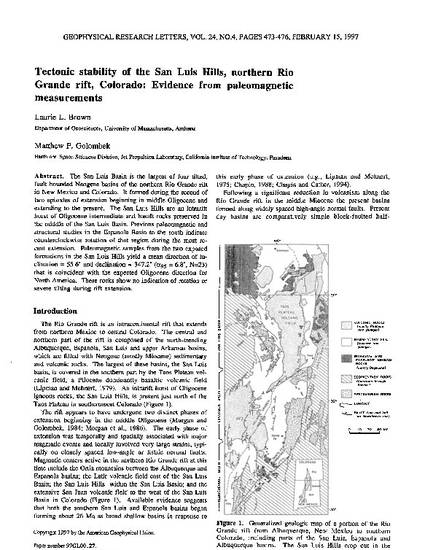
Article
Tectonic stability of the San Luis Hills, Northern Rio Grande Rift, Colorado: Evidence from paleomagnetic measurements
Geophysical Research Letters
(1997)
Abstract
The San Luis Basin is the largest of four tilted, fault bounded Neogene basins of the northern Rio Grande rift in New Mexico and Colorado. It formed during the second of two episodes of extension beginning in middle Oligocene and extending to the present. The San Luis Hills are an intrarift horst of Oligocene intermediate and basalt rocks preserved in the middle of the San Luis Basin. Previous paleomagnetic and structural studies in the Espanola Basin to the south indicate counterclockwise rotation of that region during the most recent extension. Paleomagnetic samples from the two exposed formations in the San Luis Hills yield a mean direction of inclination=55.6° and declination=347.2° (α95=6.8°, N=23) that is coincident with the expected Oligocene direction for North America. These rocks show no indication of rotation or severe tilting during rift extension.
Disciplines
Publication Date
1997
Publisher Statement
Doi:10.1029/97GL00127
An edited version of this paper was published by AGU. Copyright 1997 American Geophysical Union.
Citation Information
Laurie Brown and M. P Golombek. "Tectonic stability of the San Luis Hills, Northern Rio Grande Rift, Colorado: Evidence from paleomagnetic measurements" Geophysical Research Letters Vol. 24 Iss. 4 (1997) Available at: http://works.bepress.com/laurie_brown/3/
